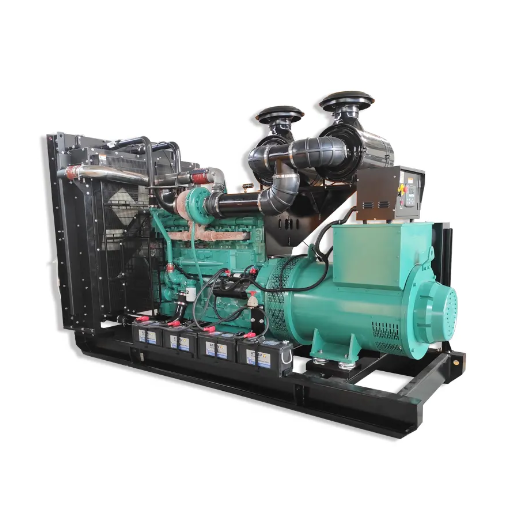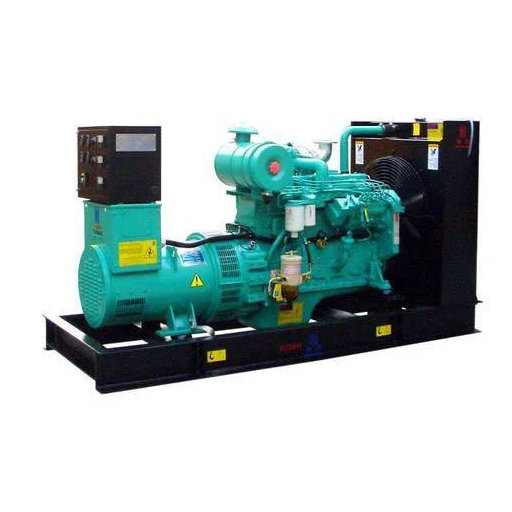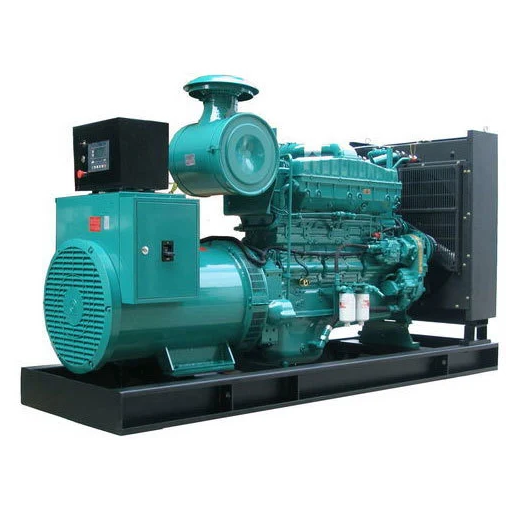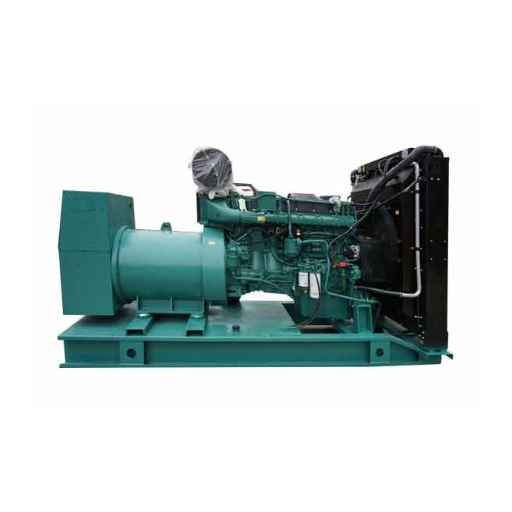When it comes to ensuring a reliable source of power during outages or in off-grid scenarios, selecting the right electric generator is critical. With countless brands on the market, it’s easy to feel overwhelmed by the options available, each promising efficiency, durability, and superior performance. This guide is here to simplify the process for you. Whether you need a generator for home backup, outdoor adventures, or industrial use, we’ll break down everything you need to know about the best electric generator brands that deliver on reliability and quality. By the end, you’ll have the knowledge needed to make an informed decision tailored to your specific power needs.
How Does a Portable Generator Work?

The Basic Functionality of a Portable Generator
A portable generator works by changing mechanical energy, usually given by an internal combustion engine, into electric energy using an alternator. The engine burns fuels like gasoline, propane, or diesel, which turns the crankshaft of the engine. This rotation mechanically turns the alternator, where inductive electromagnetism takes place. In alternators, electrical coils are rotated around magnetic fields, resulting in the production of electricity.
Most portable generators contain a fuel tank, an engine control system, voltage regulators, and power output receptacles, ensuring proper functionality of basic requirements such as power stability and sufficiency. The importance of the voltage regulator cannot be overstated. Without it, devices would face the possibility of damage due to unstable power delivery. Additionally, portable generators have features such as low oil automatic turn-off and circuit shutoff that further enhance generator safety and reliability.
Charged with variabilities that unlock niche capabilities like home emergency power backup, electricity for construction tools, or even outdoor power supply, portable generators are invaluable. Additionally, the production of inverter generators marked another technological advancement. These efficiencies offer ultra-clean energy outputs that are ideal for fragile electronics.
Advantages of Using a Portable Generator
Both residential and commercial sites can benefit from these devices, as portable generators are essential tools, providing incredible advantages in a multitude of scenarios. One of the benefits is working as a backup when there are outages in the grid, immediate power is available. Relying on this equipment, all of the crucial household appliances, heating mechanisms, and even medical devices can be operated as they would draw somewhere between 2,000 to 10,000 watts of electricity. This assures that safety and comfort are maintained during any type of emergency.
Moreover, these generators are extremely versatile and compact, proving to be portable. These generators are extremely helpful for powering remote sites, where working heavy equipment electrically is of critical importance. Power tools and lighting systems can be employed without interruption with the help of portable generators, enabling construction crews to sustain their productivity, regardless of the absence of power grids.
The arrival of inverter technology in portable generators has profoundly increased their usability by providing stable and low total harmonic distortion (THD) power tailored to delicate electronics. Fuel efficiency and decreased noise levels make these generators particularly desirable for recreational activities like camping or RV trips. Additionally, the availability of gasoline, propane, or dual-fuel models enables users to choose a generator depending on the accessibility of fuel and eco-friendly considerations, therefore making these devices more adaptable to specific needs.
Moreover, recent developments in monitoring and control technologies like wireless and smartphone connectivity enable users to track fuel level, output, and maintenance schedules with greater accuracy. These innovations aid in prolonging the unit’s lifespan, optimizing power management, and underscoring reliability and portable modern technological advancements.
Common Uses for Portable Generators
An excellent example of a portable generator’s versatility is its applicability in numerous industries, commercial activities, and households. One of its main utilizations is for backup power provision during emergencies. It is best utilized when heating, cooling, refrigeration, and medical equipment need to continue operating during outages. Data centers, hospitals, and emergency response teams are highly dependent on the portable generator’s functionality during disasters and outages of the power grid.
Additional users of the portable generators are construction sites for items such as tools, machinery, and lighting that are used in distant locations without sufficient grid power. This capability ensures that projects remain on schedule and operations proceed efficiently, even in challenging environments. Similarly, agricultural operations make use of portable generators for cooling units, milking machines, and irrigation systems, which are critical for productivity and aid in preventing spoilage.
On the recreational side, generators are very helpful while camping and going on RV trips. They enhance comfort when used for lighting, entertainment systems, and cooking a,s they foster ease while in remote areas. Help in businesses is attained by portable generators since they conveniently maintain productivity and profit by warding off unexpected power outages.
The different uses of portable generators show their significance in today’s world since they can be used in different situations, provide power, and can be transported easily.
Why Choose Honda for Your Power Needs?

Features of the Honda EU2200i Generator
The Honda EU2200i Generator utilizes the latest technology to ensure its power source is reliable, efficient, and quiet. Supported by a 121cc GXR120 commercial-grade engine, this generator maintains an output of 2,200 watts, which is sufficient for sensitive tools and appliances. Its inverter technology guarantees that power will remain stable without fluctuations to ensure the safety of devices such as laptops, smartphones, and even medical equipment.
As with most generators, the EU2200i boast outstanding attributes which include exceptional fuel efficiency. With the Eco-Throttle System, it achieves an 8.1 hours run time on a single tank of gas, regardless of the load. Not to mention the quieter than conversational noise level of 48-57 dB(A) making this generator portable and useful for camping or residential areas.
Highlighted features also include advanced usability features like an automated startup system and an oil alert system to prevent low oil engine damage. Parallel operation is also supported, this feature allows two identical units to be interconnected to double the output. All of these features are supported by the design of this generator which weighs under 47lbs ensuring optimal performance on the go.
Honda has further polished user convenience while paying careful attention to the quality of build, along with the surrounding nature. The EU2200i is CARB compliant and designed to be emission-conscious, making it green-friendly for portable power applications. The performance, reliability, and versatility further solidify the claim of Honda EU2200i standing out among the users who need versatile, dependable portable power.
What Makes Honda Generators Stand Out?
Superior engineering, exceptional durability, and reliability have given Honda generators an overarching reputation, but they truly stand out because of their performance. With new inverter technology, Honda generators always offer stable, clean power for delicate electronics like computers and medical machines. Electric devices operating on sophisticated GXR120 engines, built into models such as EU2200i, yield high reliability, versatile operations, and sheer output under controlled output conditions, while also enhancing their fuel efficiency.
Moreover, Honda generators stand out because of their unique ability to reduce noise. Working on sound minimization while maintaining robust power, models like EU2200i are best suited for residential use, outdoor events, and even construction sites bound by high noise regulations. Additionally, Honda generator’s unobtrusive Eco-Throttle™ system optimizes fuel wastage according to demand, enabling longer runtimes while lowering emissions.
Lastly, Honda’s powerful build quality and meticulous detail guarantee optimal performance and reliability over extended periods. These products endure strenuous conditions because of the construction-grade materials used, vigorous testing done, and today, Honda’s reputation in portable power tools is unrivaled.
Understanding Portable Power and Fuel Efficiency

How to Maximize Fuel Efficiency in Your Portable Generator
To improve the fuel efficiency of your portable generator, you should pay attention to maintenance, operations, and management of the fuel load. It is important to adhere to maintenance schedules laid out by the manufacturer for servicing the generator. Cleaning or changing the air filters, checking on the oil level, spark plugs, and maintaining proper oil levels directly impacts the engine’s performance and fuel economy.
You should also reduce the appliances to are powered by the generator to only the most essential ones. It is advisable to always use the generator at its optimal load for increased fuel efficiency. Generators function better, from a fuel economy perspective, when they are performing close to their peak fuel economy range, as engines have optimal operating ranges. Appliance efficiency can significantly reduce the work needed from the generator, thus further lowering fuel consumption.
Choosing and maintaining the quality of fuel can also improve the efficiency of the generator. Clean gasoline free of ethanol enhances deficient combustion. Also, it is advisable never to fill the fuel tank completely as well as check for any possible leaks that may lead to wastage or improper safety.
Also think about the incorporation of ECO-mode or idle control features that come with most modern generators. These features have the ability to change the speed of the engine to the demand level, greatly decreasing fuel usage during times of low demand. By employing these methods together, portable generators can be fuel efficient, cost effective, and have a longer lifespan.
Exploring Different Fuel Types for Generators
Determining the appropriate fuel type for your generator requires consideration of several factors such as fuel accessibility, expense, operational efficiency, storage, and even their impact on the environment. The most popular fuels used for generators include gasoline, propane, diesel, and even natural gas. Each type has its benefits and shortfalls which determines the degree to which it can be used for different applications.
Every fueling station offers gasoline making it easy to procure for portable generators. Gasoline does pose a problem for long-term storage as it degrades within 1 to 6 months without the use of stabilizers. In addition, gasoline burns less efficiently than propane or diesel, which increases emissions. This makes it easier to use for people who only need it occasionally, but it isn’t practical for those who need it regularly.
With superior energy density and efficiency comes diesel fuel, and it’s unrivaled in those fields. Less fuel consumption per kilowatt-hour translates to lower operating costs over time, so diesel generators can truly shine with their high efficiency. With a shelf-life of up to 12 months, gasoline is also safer to store, and that period can be extended if needed. On the downside, diesel engines are quite a bit louder and require more upkeep to avoid problems like gelling in colder environments.
A clean-burning fuel source like propane, which can last over a decade when stored properly, is increasingly becoming a favorite. While it’s true that propane has better emissions compared to gasoline and diesel, propane generators are still more environmentally friendly. As with every fuel type, propane does have a downside; the initial installation of propane systems with tanks can be expensive, and they come with pressurized propane tanks.
For stationary generators, natural gas operates best when it is directly fed from municipal gas lines, as that provides an endless supply of fuel. It is efficient and burns cleanly. While that might seem ideal, dependency on the municipal system makes one susceptible to vulnerabilities due to natural disasters; during the event of disasters or outages in pipelines, natural gas is useful.
When it comes to selecting a generator, each fuel type offers advantages and disadvantages in regards to efficiency and versatility. Evaluating the goal and purpose for the generator by considering factors such as energy needs, frequency of use, storage options, and environmental impact will help determine the fuel that assures optimal performance and reliability.
The Role of Portable Power in Emergency Situations
Portable power is extremely helpful during an emergency scenario when conventional power systems go offline, as it can be quickly deployed with great flexibility. The latest developments on generators suggest that newer models now incorporate inverters designed to produce stable energy outputs suitable for delicate instruments like medical devices or communication systems. This feature of an inverter generator is invaluable in disaster scenarios that require reliable power resources, as it could make the difference between life and death.
Users heavily rely on portable generators powered by gasoline, propane, or diesel during prolonged grid outages. Each fuel type also provides advantages while posing limitations: for instance, propane is cleaner and has a longer shelf life than gasoline, but diesel generators are more efficient under heavy loads. The evolution of portable generators powered by lithium-ion batteries, however, poses a completely new eco-friendly alternative, especially in urban environments sensitive to noise and emissions.
Emergency preparedness policies have begun to appreciate the importance of portable power systems on an evaluation level for maintaining critical functions like lighting, refrigeration of medical supplies, and emergency communication systems. With smart technology, the use of portable power systems smart technology use allows for remote monitoring and optimizing power used, ensuring efficient operation and conserving fuel if on-hand resources are limited. Portable power systems show their crucial value in supporting resilience and recovery efforts during emergencies by addressing short and long-term energy requirements.
What Sets Generac Generators Apart from the Rest?

Key Features of Generac Generators
Unlike other brands, Generac stands out in the market for its innovations, durability, and advanced tech in power generation. Here’s what makes them unique:
- Advanced Wi-Fi Connectivity: Their generators come equipped with advanced Wi-Fi capabilities, allowing users to monitor and even control from the convenience of their smartphone using the Generac Mobile Link™ app. Being able to monitor in real-time helps in better maintenance updates, ensuring power management is streamlined.
- Quiet Operation Technology: Over and above such advanced features, they also tend to design quiet residential generators. These units come with noise-reducing enclosures which allows their generators to function at incredibly low decibel levels, perfect for places where peace is of utmost priority.
- Fuel Versatility: Dually featured, many of Generac’s models also have the capability of using propane or natural gas. Ensuring consistent operations, such versatility is especially useful during emergencies when fuel supply is uncertain.
- Modular Transfer Switches: Known for their Seamless Automatic Functionality, these horizontal Generac switches automatically change from utility to generator power, ensuring power consistency without needing manual intervention.
- Strong Engine Architecture: Designed for long-term use, Generac installs Industrial Grade OHVI (Over Head Valve Industrial) engines with high efficiency as their base. Even under harsh and prolonged operating conditions, these units maintain existing standards of reliability.
All these factors put together make Generac a forerunner in the portable and standby power industry, offering dependable power solutions for residential, commercial, and industrial sectors.
Why Generac is a Top Choice for Backup Power Solutions
The distinctive feature of Generac in the market of backup power solutions is its engineering, adaptability to new technologies, and durability. Even with their advanced control designs, equipment able to automatically switch on and power the home during blackouts is guaranteed to turn on within seconds of a power outage. It owns patented technology named True Power™ that ensures its generators provide quality power with harmonics lower than 5%, which is exceedingly low, thus making its generators perfect for electronics and appliances that are marked as delicate.
Moreover, Generac adopts a scalable approach to power outages, from small household backup solutions to heavy-duty industrial backups. A W-Fi Internet connection enables monitoring of a generator by a mobile phone using the Mobile Link™ app, therefore users can remotely keep an eye on the generator’s status, its scheduled maintenance, and performance while the equipment is running. Having committed to environmental safety and pollution reduction, Generac’s generators also display fuel efficiency on Natural gas, propane, or diesel, thus lowering operational cost and reducing the overall economic and environmental footprint from the usage of these resources.
The reliability of Generac is solidified by the broad reach of its service network. Support is readily available for installation, maintenance, and troubleshooting due to the hundreds of technicians and dealers who are easily accessible. All of these features, alongside the support that customers receive, highlight the reason for Generac’s prevalence as an international leader in trusted power solutions, alongside the incredible innovations the company offers.
How to Determine the Right Size for Your Power Generator

Factors to Consider When Choosing a Power Generator Size
Choosing the proper size of a power generator is a very important process that involves several operational and technical considerations. Proper sizing guarantees optimal performance, avoiding breaches of safety and equipment damage. When sizing a power generator, all the factors in the list below should be taken into consideration:
- Load Requirements: The overall power demand of the equipment, appliances, or systems must be calculated to the last detail. This means capturing running watts alongside starting (surge) watts for all connected devices. Surge watts take a more prominent role for starters like motors, air conditioners, and refrigerators.
- Equipment Classification: The type and sensitivity of power equipment significantly affect generator requirements and the equipment to be powered. Generators that produce power for sensitive electronics are expected to have low Total Harmonic Distortion (THD), hence can be used with computers and soft medical equipment.
- Use Practices: Application of the equipment, be it domestic, commercial or industrial adds up to the size of the generator. Domestic standby generators for instance prioritize essential circuits while industrial generators have to continuously power heavy machinery.
- Future Load or Expansion: It is important to understand the prospective power requirements for a business or a residence that is expanding. Selecting a generator that is somewhat larger than currently needed would ease the possibility of surpassing the power capacity somewhere down the line.
- Environmental conditions: The performance of a generator is greatly influenced by external aspects which include: altitude, temperature, and humidity. For example, generators operate at reduced efficiency at greater altitudes or in extreme weather conditions; therefore, a generator of appropriate size is needed to withstand these conditions.
Evaluating all of these considerations and consulting with professionals enables customers to determine the best-suited generator for their specified requirements while ensuring functionality across all conditions. Advanced sizing tools alongside expert evaluations serve as critical aids in attaining that goal.
Matching Power Generation with Appliance Requirements
The assignment of power generation resources must illustrate a balance with the given appliance power consumption for smooth and effective functioning. A generator has to deliver a precise wattage ranging from a few hundred watts to several kilowatts (kW) for each load to ensure neither underperformance nor an overload occurs. Sensitive electronics like computers or medical apparatus raise power quality sensitivity requirements to a new height. They need clean and stable power devoid of harmonic distortion, a peculiar feature of inverter generators. Even larger appliances like air conditioners and refrigerators, together with industrial tools, require substantially higher surge starting as well as running wattages and thus need higher surge capacity generators.
First, capturing each device’s starting and running wattage enables compiling total power requirements. These figures, when summed, give the minimum output capacity expected of the generator. Altogether, a 20-30% incremental margin addition to withstand range spikes and surges alongside accommodating growth ought to balance unexpected changes. Geared towards enhanced user experience, today’s generators are fitted with capacity indicators or programmable load management systems, which greatly aid in resource alignment.
Additionally, check that the generator’s power output type (single phase or three phase) matches the requirements of the appliances. Fueling appliances into systems that do not fit, and custom output ports, will create a mismatch that is both inefficient and damaging. Using tools for real-time power management and monitors for kilowatt consumption will further protect the devices while enhancing the performance of the generator.
References
Frequently Asked Questions (FAQs)
Q: How do I choose the best generator for my needs?
A: To choose the best generator, consider the power output (AC and DC power), fuel type, portability, and specific features like electric start. Evaluate your power needs, whether for home backup, commercial use, or recreational activities, and match them with the generator’s specifications.
Q: What features should I look for in a durable generator?
A: Look for generators with durable construction, reliable engines, and features like electric start and thermal protection. Check the spec sheet for AC power output compatibility, and ensure it has a robust design to withstand harsh weather conditions, especially during a storm.
Q: What is the difference between standby generators and portable generators?
A: Standby generators are permanently installed and automatically provide power during an outage, while portable generators are mobile units that require manual setup. Standby units are ideal for long-term home backup, whereas portable ones are great for short-term use and events like tailgate parties.
Q: Can generators be used during a storm?
A: Generators can be used during a storm, but it is crucial to ensure they are operated safely. Position them outdoors to prevent carbon monoxide buildup, and use durable extension cords designed for outdoor use to connect to your home’s power equipment.
Q: How important is generator maintenance for preparedness?
A: Regular maintenance is crucial for generator preparedness. Routine checks on fuel levels, oil, and battery (for electric start models) ensure that the generator will function reliably when needed. Following the manufacturer’s maintenance specs is recommended for optimal performance.
Q: Can I use a generator to power a thermal water pump?
A: Yes, a generator can power a thermal water pump, provided the generator’s AC power output matches or exceeds the pump’s power requirements. Check the pump’s specs for compatibility and ensure the generator runs at the required voltage and amperage.








